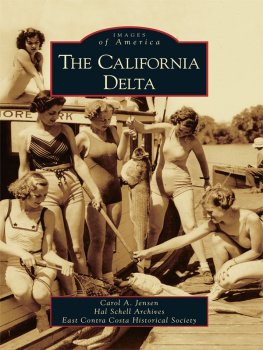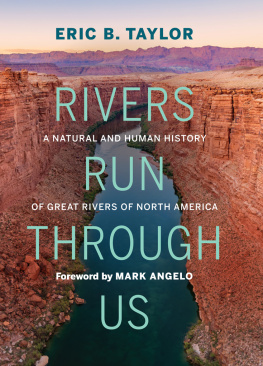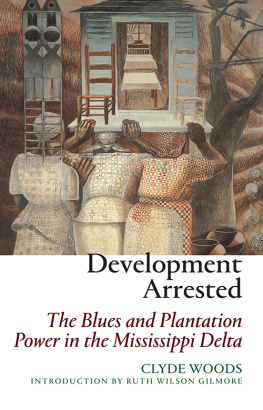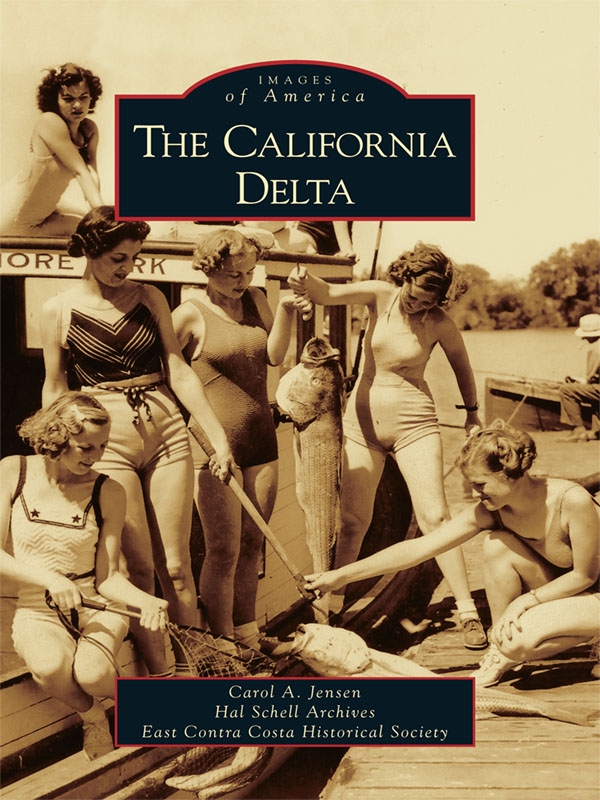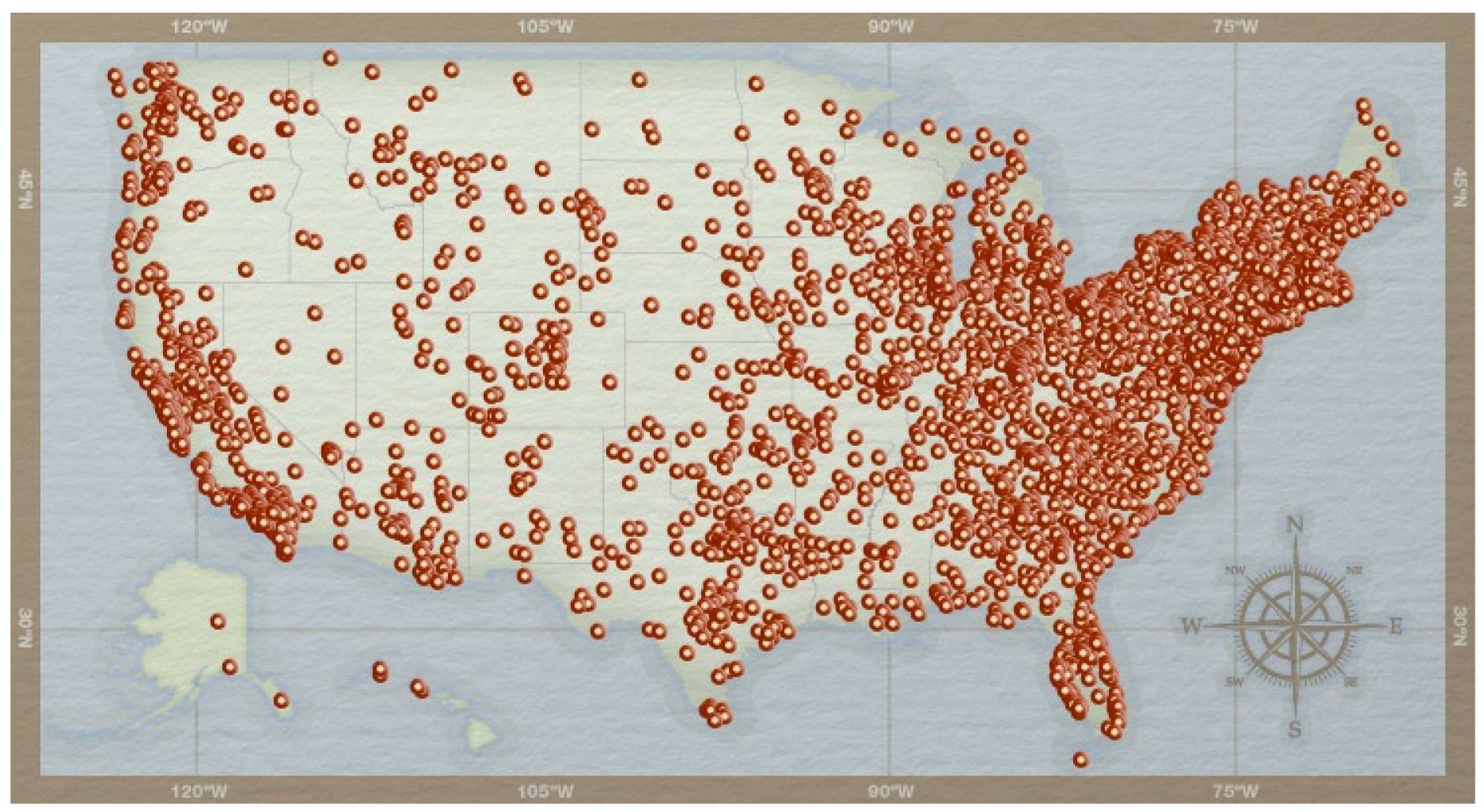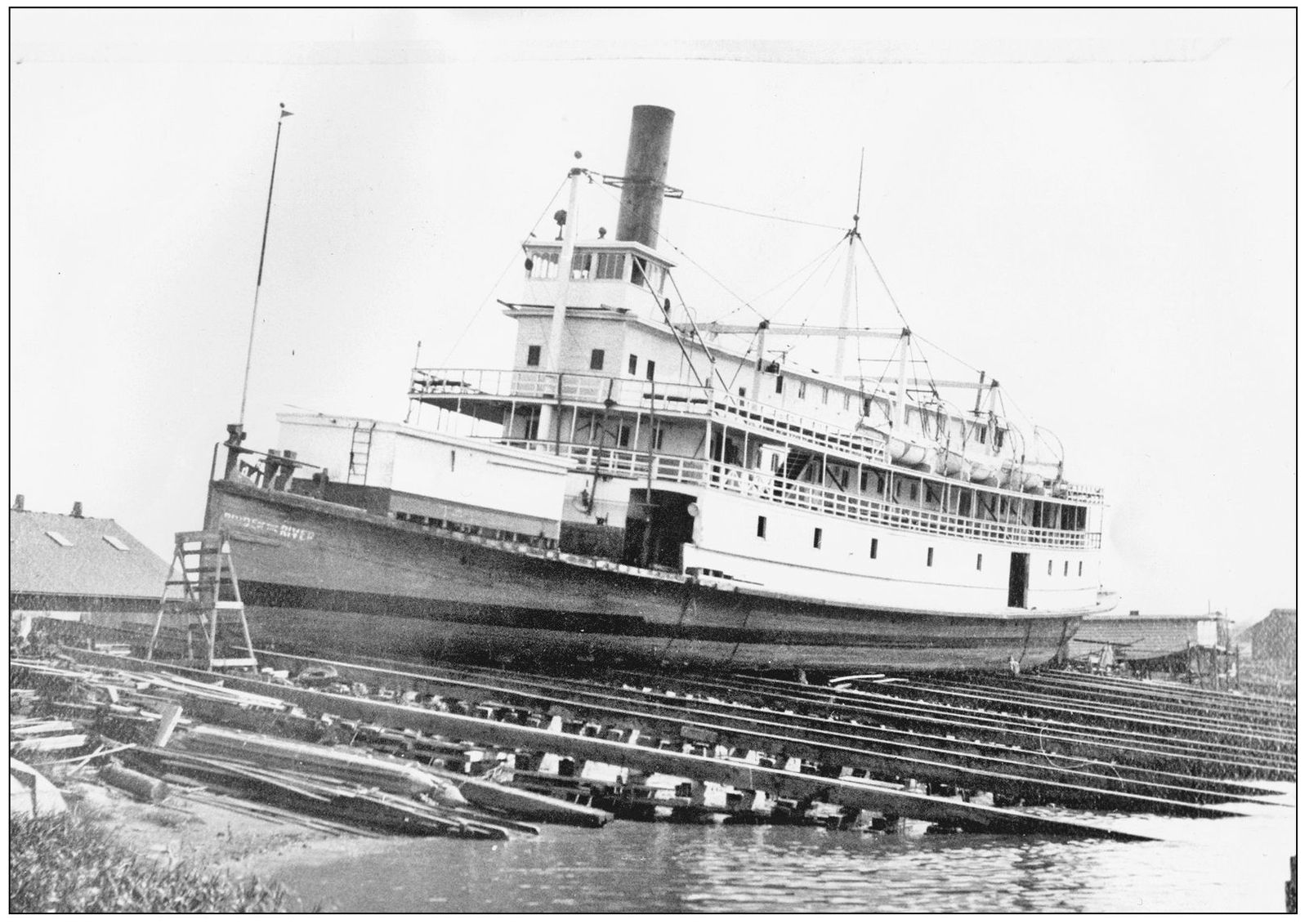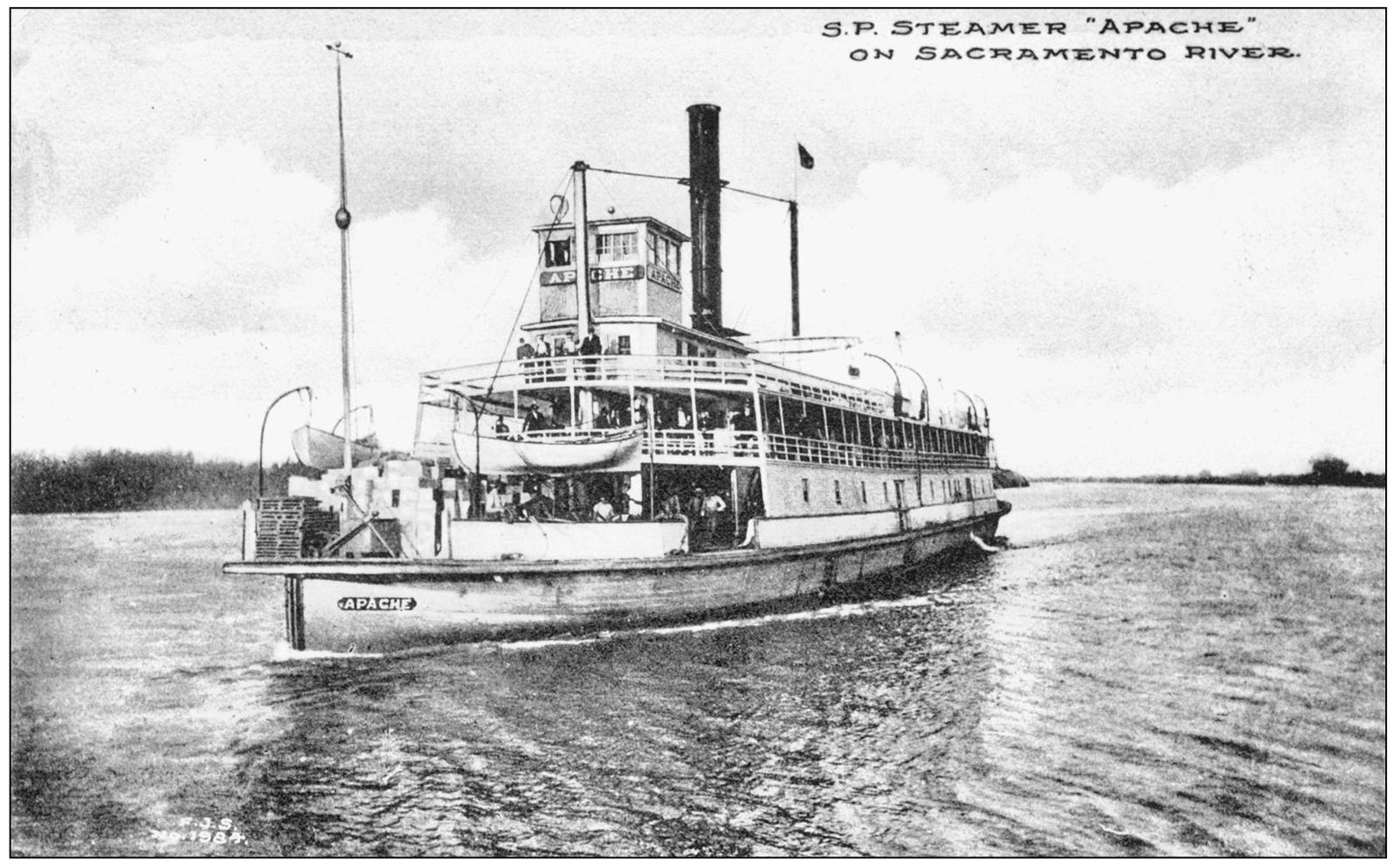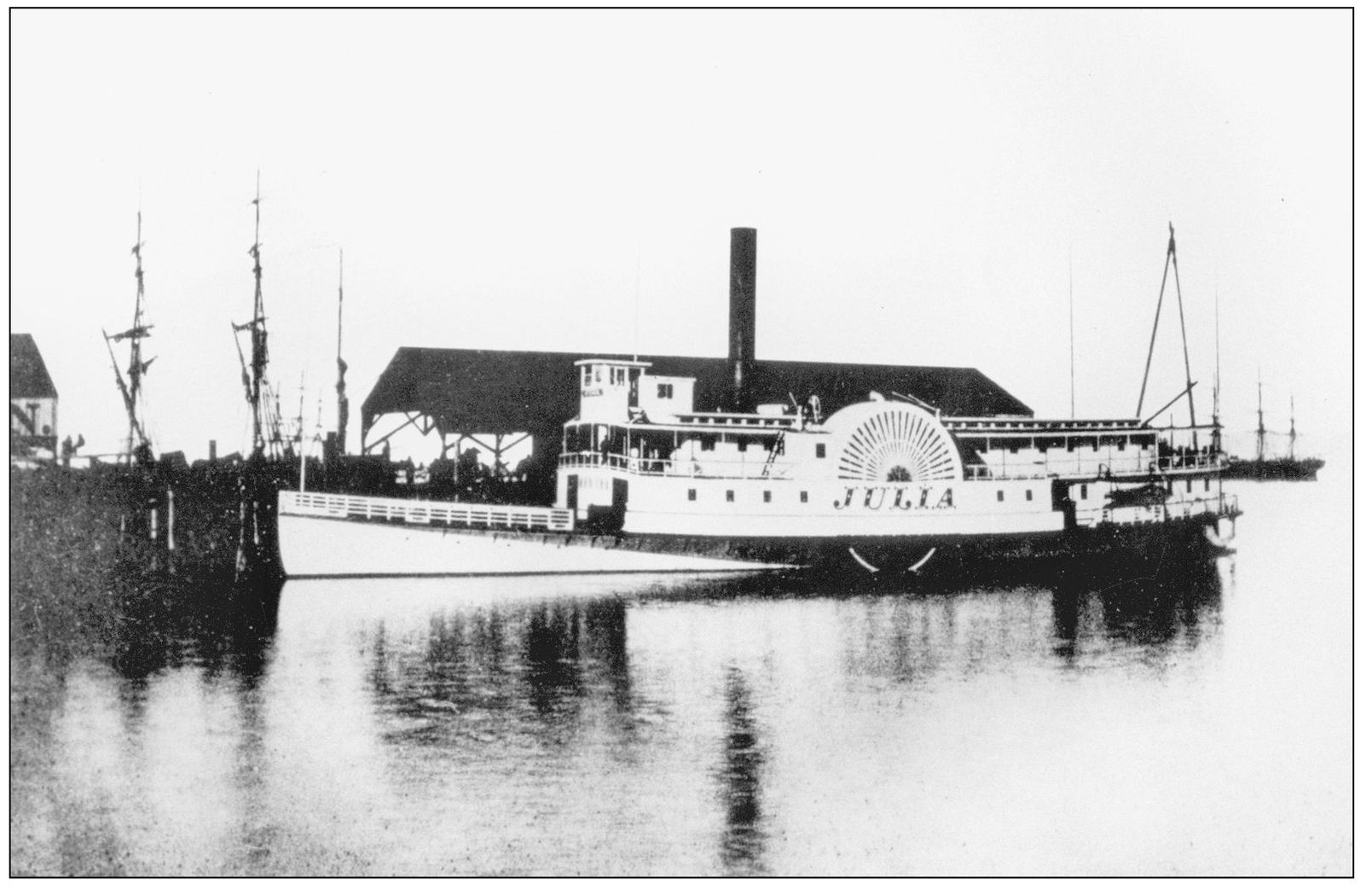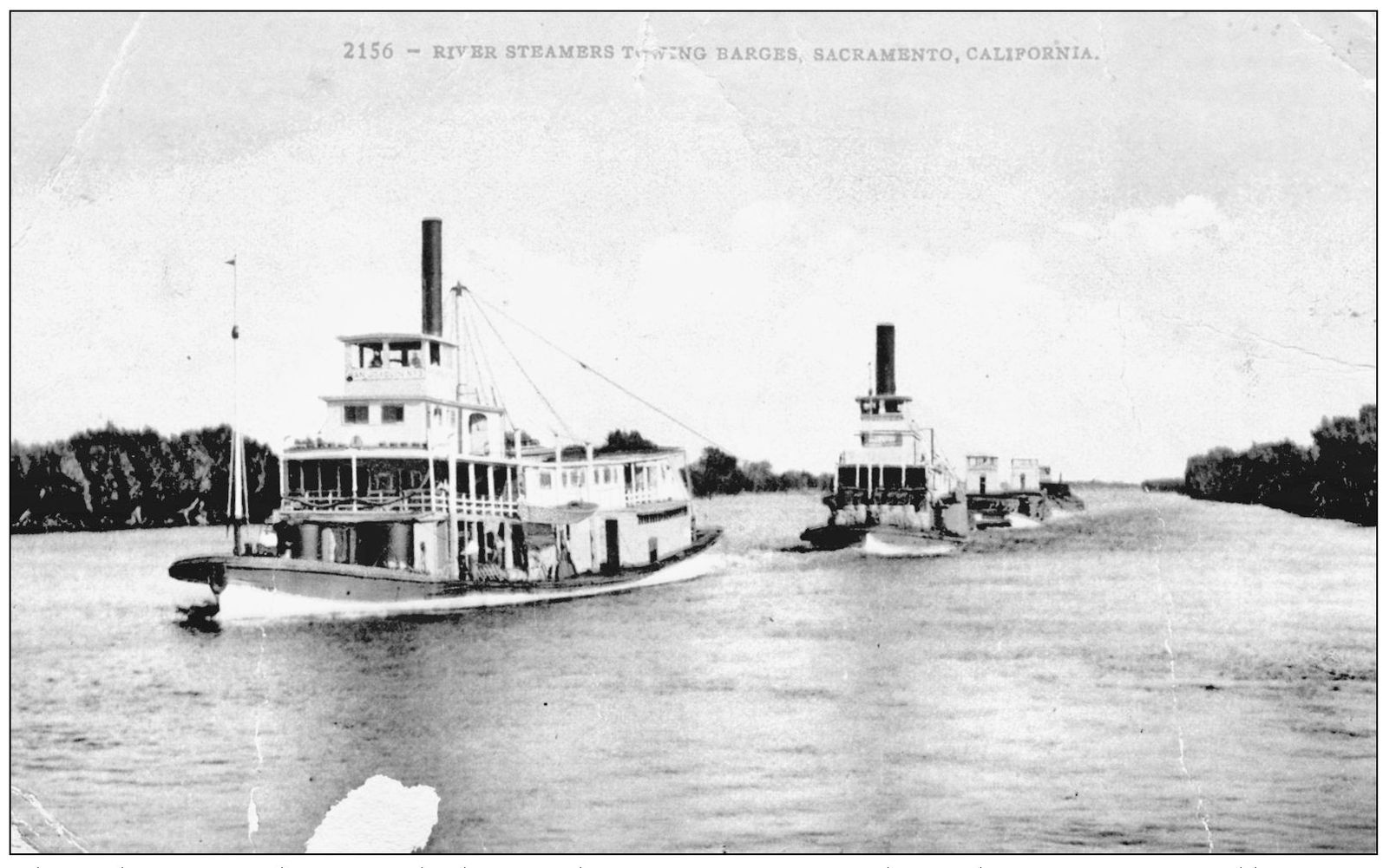ACKNOWLEDGMENTS
My last book, Cruising Californias Delta , now out of print, contained quite a lot of delta history, especially about steamboats. I was lucky to have help from many experts, and the knowledge gained from them has helped me with this book. Foremost among those who assisted with the last book were Horace Spencer, Richard E. Brown, Bill Stritzel, and Jack Ogglesby. Others who shared knowledge and material on this new book include Moyne Martinez, George F. Schneider, Tom Herzog of the Sacramento Delta Historical Society, author Kathy Leighton of Byron, Mary Phiepo, David Phiepo, Roberta Fuss, William Shelton, David Breninger, Barry Wysling, Dan Schueler, Steven J. Pickens, Garth G. Groff, delta artist Marty Stanley, Ni Orsi, Anita Troglia, author Olive Davis, historian Leslie Crow, Sonja Hansler, historian Kathie Hammer, and Dave Thomson, who runs a Web site dedicated to Mark Twain and steamboating. Members of some of the older delta yacht clubs were kind enough to dig into their archives and gather material from members of long tenure. To them I am grateful, even though, because of space limitations, we could not incorporate material from every club in the delta.
Geographically, this book covers a sizeable chunk of territory. Logistically, gathering and reviewing photographs was not always easy, and in most cases, we did not want to entrust them to Uncle Sams mail. Some of us learned about high-resolution scanning, and we moved photographs back and forth via e-mail. We have not been able to utilize every photograph offered. Some were of subjects we already had covered, some were not up to the quality level required, and some we did not have room for. In the end, it turned out to be a culling process.
I simply cannot do justice to all of you who offered to help. Nevertheless, I am indeed grateful. I am grateful also to my wife, Joanie, who shares the garret with me and has grown used to seeing my projects scattered throughout our humble abode. Both of us live with these projects daily.
Hal Schell
SELECTED READING
baydeltaoffice.water.ca.gov (California Department of Water Resources, Bay-Delta)
California Department of Water Resources. Sacramento San Joaquin Delta Atlas. Sacramento, CA: California Department of Water Resources, 1993.
Schell, Hal. All about Camping in Europe. Mill Valley, CA: Ed Buryn Books, 1970.
. Cruising Californias Delta. Stockton, CA: Shell Books, 1995.
. Dawdling on the Delta: The Complete Cruising Guide for Californias Fabulous 1,000-Mile Delta. Stockton, CA: Schell Books, 1983.
. Delta Images No. 1: Picture Tour of the 1,000-Mile Delta. Stockton, CA: Schell Books, 1982.
. Hal Schells Guide to Cruising and Houseboating the Delta: Californias 1,000-Mile Inland Waterway. Stockton, CA: Schell Books, 1979.
www.californiadelta.org (California Delta Chambers and Visitors Bureau)
www.cocohistory.com (Contra Costa County Historical Society)
www.deltawetlands.com (The Delta Wetlands Project)
www.isletonhistory.org (Isleton Brannan-Andrus Historical Society)
www.johnmarshhouse.com (John Marsh Historic Trust)
www.riovista.org (Rio Vista Chamber of Commerce)
www.sacdelta.com (Sacramento-San Joaquin Delta, California)
www.theschoolbell.com (East Contra Costa Historical Society and Museum)
Find more books like this at
www.imagesofamerica.com
Search for your hometown history, your old
stomping grounds, and even your favorite sports team.
One
PADDLE-WHEELER ERA
The California Deltas heyday of paddle-wheel steamboats is associated with the Gold Rush, but what was probably the first paddle steamer to dip its hull into the fresh waters of the delta, the 37-foot side-wheeler Sitka , arrived in 1847, a year before the Gold Rush began. Sitka was brought from Alaska in pieces aboard the Russian bark Naslednich and was reassembled in Yerba Buena (now San Francisco). On November 29, 1847, it headed up the Sacramento River to John Sutters New Helvetia (now Sacramento). The petite steamer took just over six days to complete the trip, and the wags of that time claimed that on Sitka s return voyage, a team of oxen made better time than it did from New Helvetia to Benicia.
Most of the deltas early paddle wheelers were built on the eastern coast of the United States and got here by going around the horn. It was a grand occasion in October 1849 when the 226-foot side-wheeler Senator arrived after a seven-month journey from her home port in New York. For more than 30 years, she was a regular on the San FranciscoSacramento run. Later in 1849, Captain Warren introduced Stocktonians to steamboat travel when he arrived with the side-wheeler John A. Sutter . It is said that within a few months the captain had earned himself a net profit of some $300,000.
At that time, most of the big steamers required deeper water. Among these were the ships Senator , Yosemite , and New World (which was brought around the horn by Capt. Ned Wakeman, with the sheriff in pursuit). By the time the Transcontinental Railroad was feeding Easterners into Sacramento and San Francisco, the upper rivers had silted up with the tailings created by placer mining. The big side-wheelers were placed into service in deeper water closer to the San Francisco Bay. They were replaced by shallow-draft stern-wheelers and by paddle wheelers built in San Francisco, Stockton, and Broderick (now West Sacramento).
The deltas paddle-wheeler era lasted just over 90 years. During that time, it is estimated that over 300 paddle steamers thrashed through the waters of the greater delta. Other paddle wheelers have entered into excursion service since then, including one or two that were steam driven. It was quite a timeone worth remembering by those lucky enough to be able to.
Pictured is the 175-foot stern-wheeler Pride of the River on the Central Transportation Companys dockyard ways prior to being launched in Stockton. Built in July 1878, she was sold to the U.S. Army in 1942 and sank in China Basin, San Francisco, on March 14, 1952. She cost $60,000 to build and sailed under the command of Captain Terscheren.
The Southern Pacific steamer Apache is pictured here on the Sacramento River around 1910.
The 170-foot side-wheeler Julia , built in 1870, was perhaps the first to use oil for fuel. On February 27, 1888, she caught fire at the south Vallejo wharf. The conflagration took 600 feet of wharf and killed 30 passengers. It took a long time after the fire for river boaters to feel comfortable using oil for fuel.
This color postcard, postmarked in Vorden on May 23, 1910, shows the San Joaquin and her sister ferry towing barges on the Sacramento River. The card is addressed to a family member and is signed by Ilsie Leffler. It reads, Dear Ennet. How ear [sic] you and grandpas. Ilsie went [sic] you to come up Saturday to her birthday.

